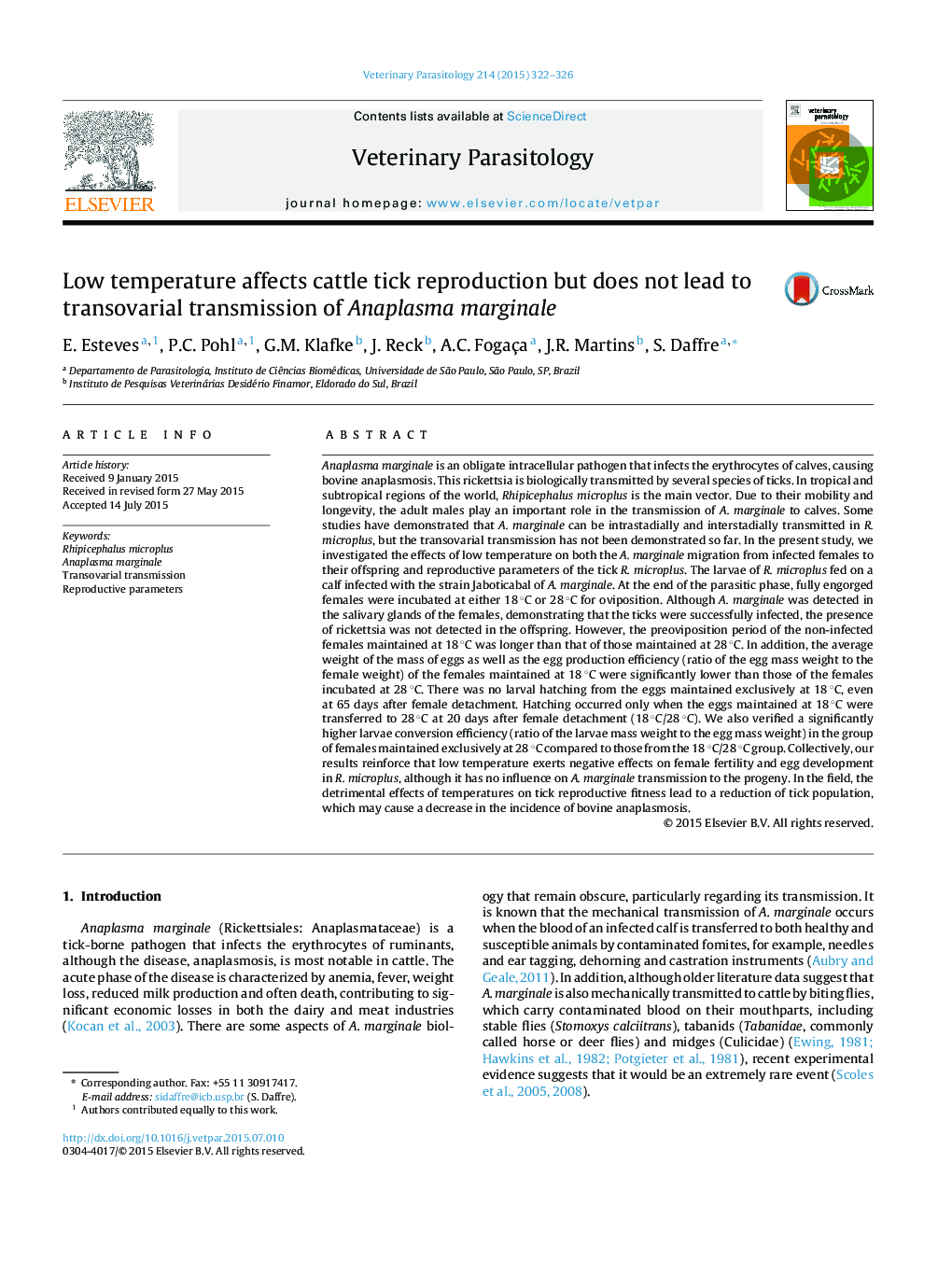| کد مقاله | کد نشریه | سال انتشار | مقاله انگلیسی | نسخه تمام متن |
|---|---|---|---|---|
| 2469916 | 1555662 | 2015 | 5 صفحه PDF | دانلود رایگان |

• Temperature shift from 28 °C to 18 °C exerts negative effects on reproductive factors.
• Temperature change has no influence on the transovarial transmission of A. marginale.
• The preoviposition period maintained at 18 °C was longer than at 28 °C.
• The average weight of the mass of eggs maintained at 28 °C was smaller than 18 °C.
• The egg production efficiency was lower at 18 °C than at 28 °C.
Anaplasma marginale is an obligate intracellular pathogen that infects the erythrocytes of calves, causing bovine anaplasmosis. This rickettsia is biologically transmitted by several species of ticks. In tropical and subtropical regions of the world, Rhipicephalus microplus is the main vector. Due to their mobility and longevity, the adult males play an important role in the transmission of A. marginale to calves. Some studies have demonstrated that A. marginale can be intrastadially and interstadially transmitted in R. microplus, but the transovarial transmission has not been demonstrated so far. In the present study, we investigated the effects of low temperature on both the A. marginale migration from infected females to their offspring and reproductive parameters of the tick R. microplus. The larvae of R. microplus fed on a calf infected with the strain Jaboticabal of A. marginale. At the end of the parasitic phase, fully engorged females were incubated at either 18 °C or 28 °C for oviposition. Although A. marginale was detected in the salivary glands of the females, demonstrating that the ticks were successfully infected, the presence of rickettsia was not detected in the offspring. However, the preoviposition period of the non-infected females maintained at 18 °C was longer than that of those maintained at 28 °C. In addition, the average weight of the mass of eggs as well as the egg production efficiency (ratio of the egg mass weight to the female weight) of the females maintained at 18 °C were significantly lower than those of the females incubated at 28 °C. There was no larval hatching from the eggs maintained exclusively at 18 °C, even at 65 days after female detachment. Hatching occurred only when the eggs maintained at 18 °C were transferred to 28 °C at 20 days after female detachment (18 °C/28 °C). We also verified a significantly higher larvae conversion efficiency (ratio of the larvae mass weight to the egg mass weight) in the group of females maintained exclusively at 28 °C compared to those from the 18 °C/28 °C group. Collectively, our results reinforce that low temperature exerts negative effects on female fertility and egg development in R. microplus, although it has no influence on A. marginale transmission to the progeny. In the field, the detrimental effects of temperatures on tick reproductive fitness lead to a reduction of tick population, which may cause a decrease in the incidence of bovine anaplasmosis.
Journal: Veterinary Parasitology - Volume 214, Issues 3–4, 15 December 2015, Pages 322–326